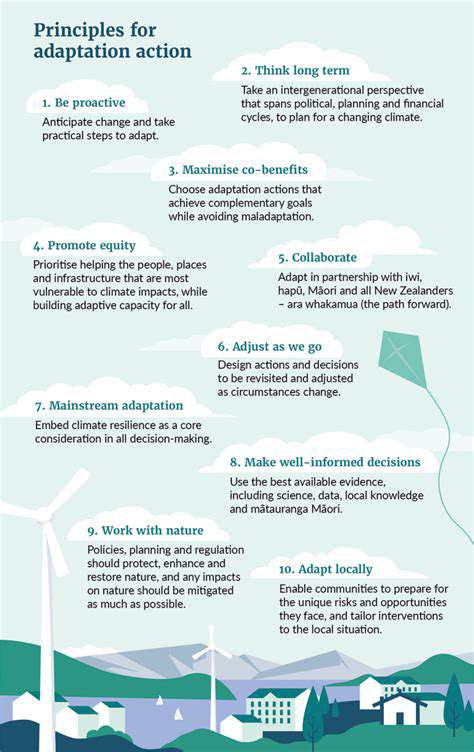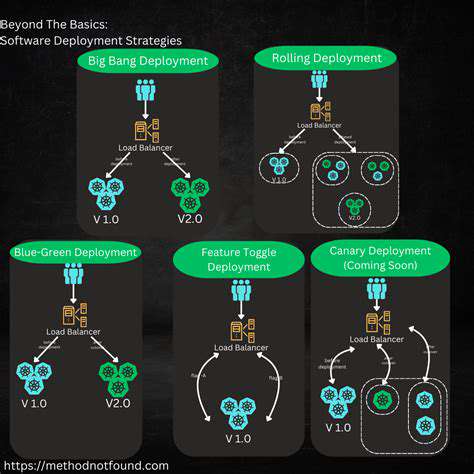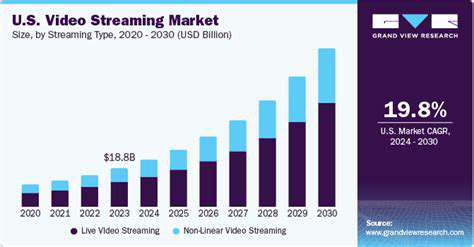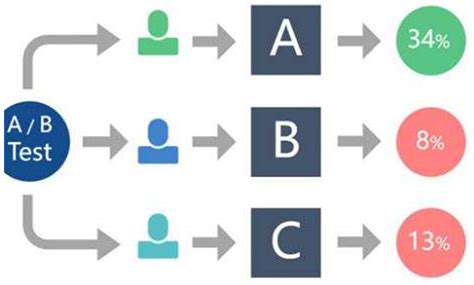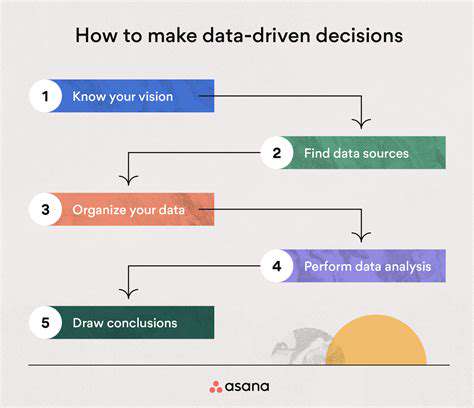CTV Advertising Challenges and Solutions
The Rise of Connected TV
Connected TV (CTV) is rapidly transforming the media landscape, offering advertisers unprecedented access to a diverse and engaged audience. With the proliferation of smart TVs, streaming devices, and other connected platforms, consumers are increasingly turning to CTV for entertainment and information. This shift presents both exciting opportunities and significant challenges for advertisers looking to reach these viewers effectively.
The sheer scale of the CTV audience is a major factor driving its growth. More households are adopting CTV services, creating a massive pool of potential customers for advertisers to tap into. The ability to target specific demographics, interests, and behaviors within this audience is also a key advantage, allowing for highly personalized advertising campaigns.
Fragmentation and Platform Diversity
One of the biggest hurdles in the CTV advertising landscape is the fragmentation of platforms. From major streaming services like Netflix and Hulu to specialized channels and niche apps, advertisers need to navigate a complex and ever-expanding ecosystem. This fragmentation necessitates a strategic approach to reach the desired audience across multiple platforms, which can be resource-intensive.
Each platform possesses unique characteristics and user behaviors. Understanding these nuances is critical for creating effective campaigns. A campaign that performs well on one platform may not resonate with audiences on another, highlighting the need for platform-specific strategies and targeting.
Targeting Challenges and Solutions
Accurate targeting is crucial for effective CTV advertising. However, traditional methods of audience segmentation may not always be as precise on CTV platforms as they are on traditional television. Advertisers need to leverage advanced data analytics and machine learning to refine their targeting strategies and ensure that their ads reach the intended audience.
Leveraging detailed user profiles, viewing history, and other contextual information can help advertisers create highly targeted campaigns. This allows for more effective ad placement, leading to improved campaign performance and a higher return on investment. Moreover, real-time bidding and dynamic ad insertion are becoming increasingly important for optimizing campaigns based on real-time data.
Measuring CTV Campaign Effectiveness
Measuring the effectiveness of CTV campaigns can be more complex than traditional advertising methods. Traditional metrics like viewership and engagement, while important, might not always accurately reflect the impact of the campaign on brand awareness, consideration, or sales. Advertisers need to employ a comprehensive suite of metrics that go beyond simple impressions.
Establishing clear key performance indicators (KPIs) is essential to track the success of a CTV campaign. Metrics such as click-through rates, conversions, and brand lift studies can provide valuable insights into the effectiveness of the campaign's messaging and targeting. Using these metrics and analyzing them alongside platform-specific data is crucial to optimize future campaigns.
Ad Spend and Budget Allocation
Determining the optimal budget allocation for CTV advertising requires careful consideration of the campaign goals and the target audience. Advertisers need to understand the varying cost-per-thousand impressions (CPMs) across different platforms and channels. Analyzing the cost-effectiveness of different strategies is critical to maximize return on investment (ROI).
Understanding the value proposition of each platform and its suitability for different advertising objectives is essential. For example, a platform focused on younger demographics might be more valuable for a brand targeting a younger audience, while a platform catering to a more established demographic may be more suited for a campaign aimed at generating brand awareness within that group. Strategic allocation of budget across different platforms should be based on this understanding.
The Future of CTV Advertising
The CTV landscape is constantly evolving, with new technologies and platforms emerging regularly. Advertisers must stay ahead of the curve by embracing innovative approaches and adapting to the changing dynamics of the market. This includes staying informed about emerging technologies like interactive advertising and personalized experiences to maintain a competitive edge.
The increasing availability of real-time data and advanced analytics will likely further refine targeting and campaign optimization. Understanding and leveraging these advancements will be essential for future CTV advertising success. Continuous learning and adaptation will be vital for advertisers to remain effective in this ever-changing paradigm.
Measurement and Attribution: A Persistent Hurdle
Measurement Challenges in CTV Advertising
Accurate measurement of CTV advertising campaigns remains a significant hurdle for advertisers. The fragmented nature of the CTV ecosystem, with various platforms and devices, often makes it difficult to track viewership and engagement precisely. This lack of unified measurement standards across different CTV providers complicates the ability to accurately gauge campaign effectiveness and ROI. Precise data on impressions, clicks, and conversions across different CTV platforms is critical for optimizing campaigns, but it's often unavailable or inconsistent.
Attribution Complexity in CTV Environments
Determining the precise attribution of a conversion to a CTV ad is notoriously complex. Unlike linear TV, where viewers often see a single ad before making a purchase, CTV viewers might encounter multiple ads from different sources over a period of time. The path to conversion can be convoluted, involving multiple touchpoints across various platforms. Pinpointing the specific CTV ad that directly influenced a purchase becomes a significant challenge, and robust attribution models are still under development in this space.
Data Silos and Interoperability Issues
The CTV ecosystem is characterized by numerous data silos, making it difficult to integrate and analyze data from various sources. Different platforms often employ distinct measurement methodologies, preventing a comprehensive view of the entire campaign performance. The lack of interoperability between these systems hinders the ability to develop a unified picture of viewer behavior and campaign effectiveness across the entire CTV landscape. This fragmented data makes it hard to compare performance between different platforms and optimize strategies accordingly.
Lack of Standardized Metrics and KPIs
The absence of standardized metrics and key performance indicators (KPIs) in CTV advertising presents a significant challenge. There's no universally accepted benchmark for measuring success, making it difficult to compare campaigns across different CTV platforms. This lack of standardization makes it challenging to evaluate the effectiveness of different strategies and to optimize campaigns for optimal results. Without agreed-upon metrics, measuring the success of CTV campaigns becomes an imprecise and subjective exercise.
The Role of Third-Party Data in CTV Attribution
Third-party data plays a crucial role in CTV attribution, but its use raises privacy concerns and potential biases. Leveraging third-party data can help advertisers gain a deeper understanding of viewer behavior and preferences, but the ethical implications of using this data need to be carefully considered. Advertisers must be transparent about their data usage and ensure that they're complying with relevant privacy regulations to maintain trust and avoid reputational damage. Finding balance between leveraging data and respecting user privacy is essential.
Viewability and Fraud in CTV Advertising
Viewability and fraud are significant concerns in CTV advertising. Ensuring that ads are actually viewed by intended audiences is critical, but ensuring that impressions are genuine and not fraudulent is a major challenge. The prevalence of ad fraud in CTV environments can lead to wasted ad spend and inaccurate campaign performance metrics. Robust validation mechanisms and fraud detection tools are crucial for advertisers to mitigate these risks and ensure that their investments are optimized. Reliable tracking and verification are essential to prevent wasted spending.
The Evolving CTV Landscape and Adaptation
The CTV landscape is constantly evolving, with new platforms and technologies emerging frequently. Advertisers need to adapt to these changes and stay ahead of the curve to maintain their effectiveness in this dynamic environment. Staying informed about the latest trends and technological advancements is crucial for developing strategies that are relevant and successful in the ever-changing CTV advertising market. This requires continuous monitoring of the evolving ecosystem to ensure that campaigns remain effective and adaptable.


Read more about CTV Advertising Challenges and Solutions
Hot Recommendations
- Attribution Modeling in Google Analytics: Credit Where It's Due
- Understanding Statistical Significance in A/B Testing
- Future Proofing Your Brand in the Digital Landscape
- Measuring CTV Ad Performance: Key Metrics
- Negative Keywords: Preventing Wasted Ad Spend
- Building Local Citations: Essential for Local SEO
- Responsive Design for Mobile Devices: A Practical Guide
- Mobile First Web Design: Ensuring a Seamless User Experience
- Understanding Your Competitors' Digital Marketing Strategies
- Google Display Network: Reaching a Broader Audience




